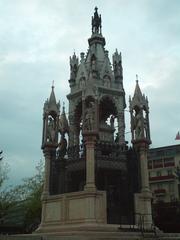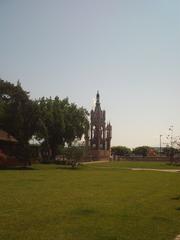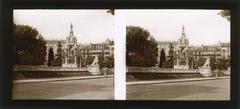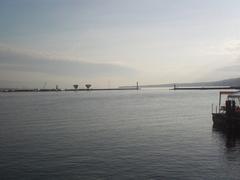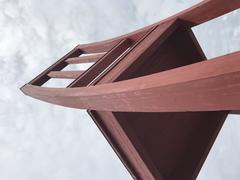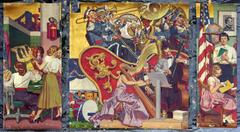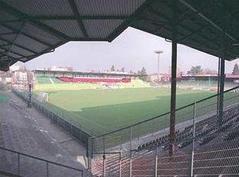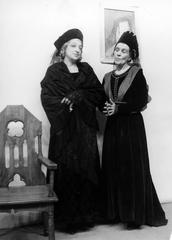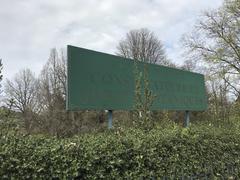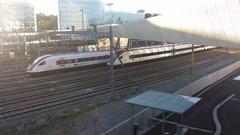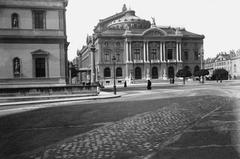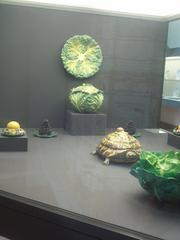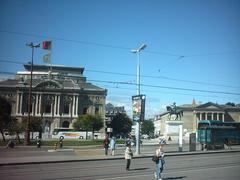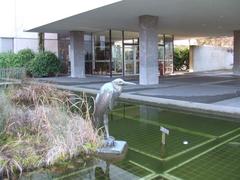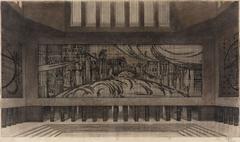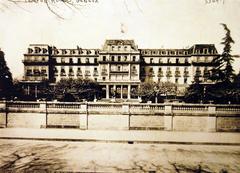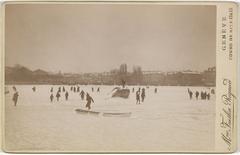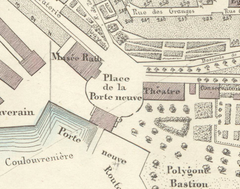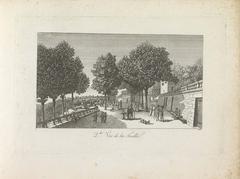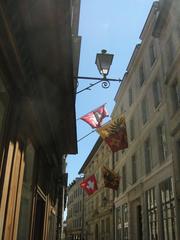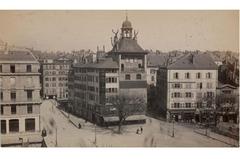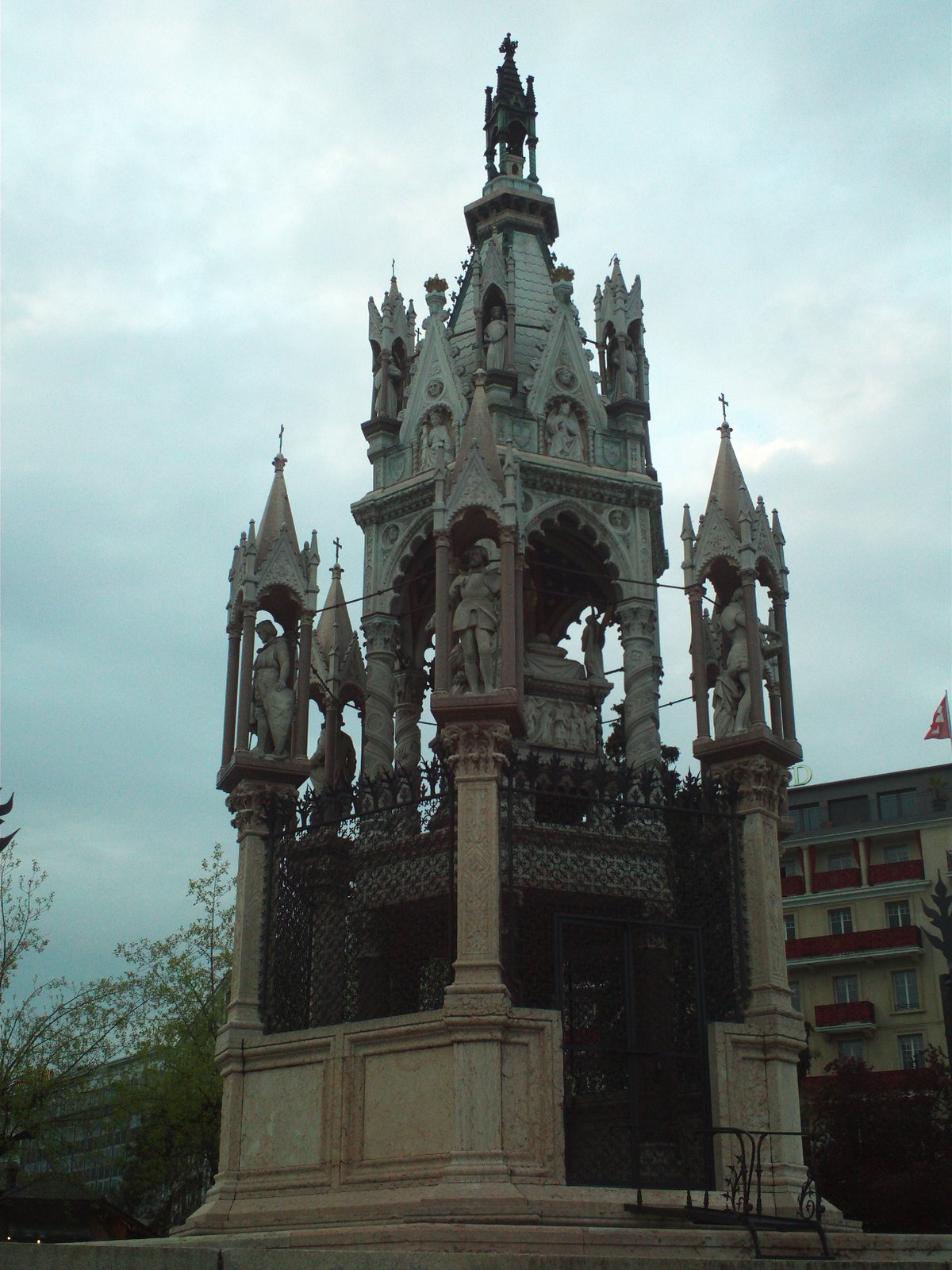
Brunswick Monument: Visiting Hours, Tickets, and Historical Sites in Geneva
Date: 16/08/2024
Introduction
The Brunswick Monument, an iconic neo-Gothic mausoleum located in Geneva, Switzerland, stands as a testament to the city’s rich historical tapestry and its significance as a sanctuary for exiled nobility. Erected in honor of Charles II, Duke of Brunswick, this striking structure is not only a marvel of neo-Gothic architecture but also a symbol of the Duke’s lasting legacy to the city. Born in 1804, Charles d’Este-Guelph led a life marked by linguistic prowess, musical talent, and knightly valor. His expulsion from his duchy in 1830 set him on a path of exile across Europe, culminating in a substantial fortune amassed in Paris (Spotting History). This guide will provide you with comprehensive insights into the monument’s historical context, architectural significance, visitor information, and travel tips to enhance your experience when visiting this remarkable landmark.
Table of Contents
- [Discover the Brunswick Monument](#discover-the-brunswick-monumentdiscover-the-brunswick-monument)
- [History of the Brunswick Monument](#history-of-the-brunswick-monumenthistory-of-the-brunswick-monument)
- [The Duke of Brunswick: Charles d’Este-Guelph](#the-duke-of-brunswick-charles-deste-guelphthe-duke-of-brunswick-charles-deste-guelph)
- [Exile and Fortune](#exile-and-fortuneexile-and-fortune)
- [The Bequest to Geneva](#the-bequest-to-genevathe-bequest-to-geneva)
- [Architectural Inspiration](#architectural-inspirationarchitectural-inspiration)
- [Construction and Location](#construction-and-locationconstruction-and-location)
- [Controversy and Debate](#controversy-and-debatecontroversy-and-debate)
- [The Monument’s Features](#the-monuments-featuresthe-monuments-features)
- [Historical Significance](#historical-significancehistorical-significance)
- [Visitor Information](#visitor-informationvisitor-information)
- [Visiting Hours and Ticket Information](#visiting-hours-and-ticket-informationvisiting-hours-and-ticket-information)
- [Travel Tips and Accessibility](#travel-tips-and-accessibilitytravel-tips-and-accessibility)
- [Nearby Attractions](#nearby-attractionsnearby-attractions)
- [Nearby Attractions and Photographic Spots](#nearby-attractions-and-photographic-spotsnearby-attractions-and-photographic-spots)
- [Special Events and Guided Tours](#special-events-and-guided-toursspecial-events-and-guided-tours)
- [Preservation and Recognition](#preservation-and-recognitionpreservation-and-recognition)
- [Visitor Experience](#visitor-experiencevisitor-experience)
- [Stay Updated](#stay-updatedstay-updated)
- [History of the Brunswick Monument](#history-of-the-brunswick-monumenthistory-of-the-brunswick-monument)
Brunswick Monument in Geneva: Visiting Hours, Tickets, and Historical Insights
Discover the Brunswick Monument
The Brunswick Monument, an iconic neo-Gothic mausoleum, stands as a testament to Geneva’s rich history and its role as a haven for exiled nobility. This guide covers everything from visiting hours and ticket information to the monument’s historical significance and nearby attractions.
History of the Brunswick Monument
The Duke of Brunswick: Charles d’Este-Guelph
Charles d’Este-Guelph, the Duke of Brunswick, was born in 1804. He was a linguist, musician, and knight, known for his eccentric personality. His life took a dramatic turn in 1830 when he was expelled from his duchy, located in what is now Germany. This expulsion led him into a life of exile across various European cities, including Paris. During his time in Paris, he amassed a considerable fortune, which he later brought with him to Geneva.
Exile and Fortune
The Duke’s exile was marked by his ability to adapt and thrive in different European cities. His time in Paris was particularly significant as it was here that he accumulated his wealth. This fortune would later play a crucial role in his legacy in Geneva. The Duke’s life in exile was not just about survival; it was about making a mark, which he eventually did through his bequest to the city of Geneva.
The Bequest to Geneva
In 1873, Charles d’Este-Guelph passed away in Geneva. In his will, he left his immense fortune to the city with a specific condition: the city had to provide him with a grand funeral and erect a monument in his honor. This bequest was unprecedented and sparked much debate within the city. The Duke’s demand for a mausoleum was a first for Geneva, a city that had never before constructed such a monument.
Architectural Inspiration
The Brunswick Monument is a neo-Gothic-style mausoleum, a historical replica of the Scaligeri family tomb in Verona, dating back to the fourteenth century. This architectural choice was made at the Duke’s request, reflecting his admiration for the Gothic style and his desire for a monument that would stand out in Geneva. The design’s intricacy and historical significance make it a unique landmark in the city.
Construction and Location
The construction of the Brunswick Monument was a significant event in Geneva’s history. Built in the Jardin des Alpes, in the former natural harbor of Pâquis, the monument’s location was carefully chosen to give it prominence. The site, bounded by Rue des Alpes, Quai du Mont-Blanc, and Rue Adhémar-Fabri, is a central and accessible area in Geneva, ensuring that the monument is a visible and integral part of the city’s landscape.
Controversy and Debate
The decision to build the Brunswick Monument was not without controversy. The idea of constructing a mausoleum in Geneva was new and sparked much debate among the city’s residents and officials. Some questioned the appropriateness of such a grand structure, while others saw it as a fitting tribute to a man who had left a significant fortune to the city. Despite the debates, the monument was eventually built, becoming a lasting symbol of the Duke’s legacy and the city’s history.
The Monument’s Features
The Brunswick Monument is notable for its neo-Gothic architecture, which includes intricate carvings and detailed sculptures. The design is a faithful replica of the Scaligeri tombs, featuring elements such as pointed arches, spires, and statues. One of the most intriguing aspects of the monument is the orientation of the Duke’s sarcophagus, which faces inland rather than towards the lake. This unusual feature has puzzled historians and adds an element of mystery to the monument.
Historical Significance
The Brunswick Monument holds significant historical value for Geneva. It represents a period in the city’s history when it was becoming a refuge for exiled nobility and intellectuals. The Duke of Brunswick’s life and legacy are intertwined with the city’s development during the 19th century. His bequest and the subsequent construction of the monument highlight the complex relationship between the city’s residents and the exiled nobility who sought refuge there.
Visitor Information
Visiting Hours and Ticket Information
The Brunswick Monument is open to visitors year-round. While there is no entrance fee, donations for the monument’s upkeep are appreciated. Typical visiting hours are from 9 AM to 6 PM, but it’s advisable to check the official Geneva tourism website for any changes or special closures.
Travel Tips and Accessibility
The monument is easily accessible by public transport, with nearby bus and tram stops. For those driving, there are parking facilities within walking distance. The site is wheelchair accessible, ensuring that everyone can enjoy this historical landmark.
Nearby Attractions
Nearby Attractions and Photographic Spots
The Jardin des Alpes, where the monument is located, offers a serene setting with beautiful views of Lake Geneva and the city’s skyline. Nearby attractions include the Jet d’Eau, St. Pierre Cathedral, and the Museum of Art and History. These sites provide excellent opportunities for photography and further exploration of Geneva’s rich cultural heritage.
Special Events and Guided Tours
The Brunswick Monument occasionally hosts special events and guided tours that delve deeper into its history and significance. These tours provide unique insights and are highly recommended for history enthusiasts. Check the official tourism website for the latest information on upcoming events.
Preservation and Recognition
Today, the Brunswick Monument is listed as a historic building, recognized for its architectural and historical importance. It stands as a testament to the Duke of Brunswick’s life and his impact on Geneva. The monument is maintained by the city and continues to be a popular attraction for both locals and tourists. Its preservation ensures that future generations can appreciate the unique history and architectural beauty of this landmark.
Visitor Experience
Visitors to the Brunswick Monument can explore its intricate details and learn about the Duke of Brunswick’s life and legacy. The monument’s location in the Jardin des Alpes provides a serene setting, perfect for reflection and appreciation of the historical significance of the site. The surrounding area offers beautiful views of Lake Geneva and the city’s skyline, making it a must-visit spot for anyone interested in Geneva’s history and architecture.
Stay Updated
For more information on Geneva’s historical sites, download our mobile app Audiala, check out our related posts, or follow us on social media for the latest updates.
Conclusion
The Brunswick Monument is more than just a mausoleum; it is a symbol of Geneva’s rich history and its role as a haven for exiled nobility. The Duke of Brunswick’s life, his bequest, and the subsequent construction of the monument are integral parts of the city’s historical narrative. Visitors to the monument can gain a deeper understanding of Geneva’s past and appreciate the architectural beauty of this unique landmark.
References
- Spotting History, 2023, Geneva Tourism Spotting History
- Atlas Obscura, 2023, Geneva Tourism Atlas Obscura
- Geneva Tourism, 2023, Geneva Tourism Geneva Tourism
- Wikipedia, 2023, Geneva Tourism Wikipedia
- Holidify, 2023, Geneva Tourism Holidify
- Questo App, 2023, Geneva Tourism Questo App
